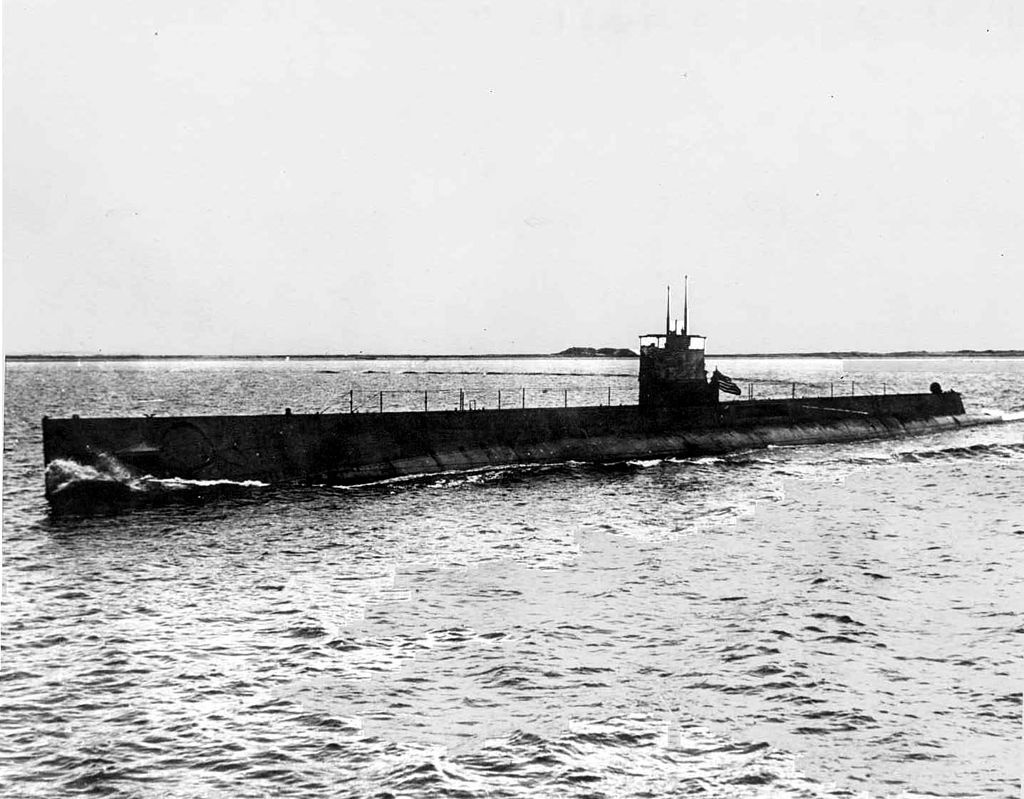
Home late. Off to bed. Since I’m tired I’m going to literally randomly pull an image from our imgur and call it a night.
![[Mail Call 05/04/17] Home late edition](https://www.stec-hq.com/wp-content/uploads/2020/05/d21d2fealy1ffaljz7tezj20rt112dkw.jpg)


Home late. Off to bed. Since I’m tired I’m going to literally randomly pull an image from our imgur and call it a night.
![[Mail Call 05/04/17] Home late edition](https://www.stec-hq.com/wp-content/uploads/2020/05/d21d2fealy1ffaljz7tezj20rt112dkw.jpg)
Welcome to another one of my sub corners. Hope you’ve had a good evening!
So, before I begin, I would like to complain about something.

Morgane, you really should figure out a way to organize all the things you write. The website’s a mess and frankly nobody can find much of anything. It’s hard to find what things are related to shipgirls and which things are actually related to history…
I know. ;_; I’m working on it.
Anyways. I want to take us a little further back in history to the 1920s. You see, despite the usefulness of the submarine, most of the major world powers really didn’t know how to build them very well. After all, the first sea-going submarines came out around 1910 – those being the D-class of the Royal Navy and the U-19 for the Imperial German Navy respectively.
What’s important to keep in mind was that the unrestricted U-boat campaign during 1917 and 1918 sparked a lot of lightbulbs in the naval designers of various countries. The victorious Allies took the German U-boats and studied them carefully, then applied what they learned to their own submarine designs.
For the U.S. Navy, though, the U-boat was nothing short of an epiphany. The US Navy had initially saw the submarine as a good coastal defense unit. Seeing what the Germans had made the Americans realize that submarines could be very useful in scouting the Pacific if they could sortie out from Hawaii or bases in the West Coast. They were also very interested in technical elements such as hinged masts that would facilitate long distance radio communications, chemicals used for air purification, and of course, items used for submarine rescue.
The thing is, though, many of the German U-boats were optimized for commerce raiding and port patrols. That isn’t exactly what some of the naval commanders had in mind, where great roles of the submarine was envisioned in fleet to fleet actions. For that sort of thing you need high surface speed (to get to where you want – remember submarines throughout World War II were quite slow underwater!) and good communications. So, at the time, U.S. naval designers had a dilemma on their hands – they simply didn’t really know what exactly they would want in the design of these submarines. This resulted in a number of failures such as the T-class submarines, and it took them quite a while before getting to, well, the good stuff!
You have to understand that the first of the “Fleet Boats” – that’s to say, submarines designed not for coastal defense, but “fleet actions” (going out over long distances to attack the enemy) were authorized in 1916. These were nine additional submarines, and by the time the Washington Naval Conference occurred, three of them were already laid down.
However, these submarines were very large and very expensive, and only six would be completed within the decade. In total, the nine different V-boats would really fall under three broad categories, and as you will see later on, they were very different from one another. The Narwhal and Nautilus, for instance, would be almost twice as large (in terms of displacement) when compared to the earlier boats!
Let’s take a look.

(Image of AA1 taken from navsource.org)
I tend to call these guys T-boats. The Navy changed its nomenclature system quite a bit, so you will find them being called SF 1, AA1, or later on, T1. There were three of them, and they had a displacement of about 1000 tons. They were quite large (twice as big as any U.S. submarines at the time) and were completed after World War One. The primary goal was for these submarines to accompany the surface fleets into battle. That’s why they were equipped with four large NLSE diesels that could make them go at about 20 knots.
However, what they found was that the doubling up of the diesels (the T-boats had two shafts) resulted in very severe torsional vibration problems for the ship. While the T-boats were able to make 20 knots during sea trials, subsequent trials showed that they could not keep up with the fleet at all.
This, among a slew of other issues, resulted in the T-boats being decommissioned in just two years. I’m not saying it was a good design at all, and in all honesty it’s a pretty big waste of money. But, it did get the U.S. started on its long journey towards making better submarines.
STEC Archives, Digital Document Division
May 1st, 1989
Correspondence no. 1014
Sender: Marblehead, Shipgirl
Recipient: Staff No. 4, Department of Historical Research, STEC Archives.
We have access to CIA stuff right? Did you look there?
Correspondence no. 1242
Time: XX:XX
Sender: Staff No. 4, Department of Historical Research, STEC Archives.
Recipient: Marblehead, Shipgirl
Ms. Marby,
Yes we did. The individual you’re researching is in our own archive records as Agent no. 1863. After said event he was rotated to a clerical position and performed his job dutifully though without additional note. His employment was terminated on April 15th, 1961 and Agent no. 1863 was subsequently institutionalized at the Manhattan Psychiatric Center. He passed away two days after.
Correspondence no. 1245
Time: XX:XX
Sender: Marblehead, Shipgirl
Recipient: Staff No. 4, Department of Historical Research, STEC Archives.
Not helpful. Again, I am looking for information pertaining to a top secret hearing carried out by the House Un-American Activities Committee. The hearing occurred in 1961 over suspected ties and/or communist sympathizers of the U.S. Department of Agriculture. Agent no. 1863 was the sole source from a major intelligence agency since, well, LITERALLY nothing happened. But you know they wanted to make sure of that.
Correspondence no. 1356
Time: XX:XX
Sender: Staff No. 4, Department of Historical Research, STEC Archives.
Recipient: Marblehead, Shipgirl
Ms. Marby,
Do you mean the one involving Ms. Iowa? I’ve attached it here.
Correspondence no. 1358
Time: XX:XX
Sender: Marblehead, Shipgirl
Recipient: Staff No. 4, Department of Historical Research, STEC Archives.
YES! THANKS
Correspondence no. 1361
Time: XX:XX
Sender: Marblehead, Shipgirl
Recipient: Staff No. 4, Department of Historical Research, STEC Archives.
Wait, is this it?
Correspondence no. 1450
Time: XX:XX
Sender: Staff No. 4, Department of Historical Research, STEC Archives.
Recipient: Marblehead, Shipgirl
Ms. Marby,
Yes.
Correspondence no. 1455
Time: XX:XX
Sender: Marblehead, Shipgirl
Recipient: Staff No. 4, Department of Historical Research, STEC Archives.
… You know what I’m going to go get lunch now. Literally nothing. No secret funneling of government slush-funds, no global defense coordination initiative, no COMMUNIST ARCANO-TECH, not even a secret handshake.
They really did just talk about growing stuff for three hours and Khrushchev left with a small package of seeds as a sign of friendship. BORING.
Correspondence no. 29, 657
Time: XX:XX
Sender: Pennsy, Shipgirl
Recipient: Marblehead, Shipgirl
I seriously CANNOT understand you girls and your silly games. CANDY IS NOT RATIONED. IT’S LITERALLY SITTING THERE. IN JARS. AT EVERY CANTEEN AND CAFETERIA AND RESTAURANT. YOU EVEN HAVE IT IN YOUR OFFICE.
WHY BET.
I’m on archival duty this month and I only have four staff members. FOUR. Next time, bookworm, maybe think about GODDAMN ASKING SOMEONE. LIKE MAYBE ASK IOWA. THEN YOU WOULD REALIZE THAT AS PER USUAL CHESTER’S A DAMN TROLL AND YOU WERE DUMB ENOUGH TO BUY INTO IT.

This is St. Bernard’s approximation of ice cream. Looks pretty good. The article is here in Japanese, but I largely cobbled together from the Jefferson museum and the internet at large.
The source can be found here.
“If he had not tasted it before, Jefferson no doubt encountered ice cream during his time in France (1784-1789), and it was made and served in his kitchens for the rest of his life. Among the items filling the 86 crates of belongings that Jefferson had shipped back from France were “quatre moule a glasse” [four ice molds].”
What’s this got to do with the navy? Well, similarity of general methods. It’s general knowledge that ice cream was a coveted morale booster. There’s plenty of legends out there (most of which are true) involving destroyers picking up downed airmen from carriers and getting X gallons of ice cream for their efforts.
The thing is, navy ice cream during WW2 is a little different from what we’d expect. Taken from the Cookbook of the US Navy:
Ice Cream should be a “regular” on the Navy menu. In addition to being one of America’s favorite desserts, ice cream is nourishing and economical.
The following directions, if carefully observed, will be helpful in producing ice cream of good quality.
Keep the freezer, utensils used in measuring the ingredients, ice cream cans and all other equipment scrupulously clean and properly sterilized.
Weigh or measure all ingredients accurately to insure uniformity, proper texture and pleasing flavor in the finished product.
Follow directions carefully.
It is important that the correct “overrun” be reached before the batch is drawn off from the freezer. The “overrun” which refers to the increase in volume, obtained by whipping air into the mix during the freezing process, may vary from 80% to 100%. An “overrun” of 100% is most commonly used in commercial practice.
A simple way to determine “overrun” is as follows : Weigh 1 cupful of the original mix, deducting the weight of the cup. When it is determined that the proper “overrun” has been reached, weigh 1 cupful of the ice cream and again determine the net weight. If the weight of the ice cream is just 50% of the weight of the original mix, the proper “overrun” of 100% has been obtained. For example, if the cup of mix originally weighed 8 ounces, the sample taken just before the batch is drawn should weigh 4 ounces. Ice cream with too much “overrun” will melt rapidly and show many air bubbles in the melted product.
Keep the blades of the freezer sharp and properly adjusted since faulty adjustment allows a thin layer of cream to freeze along the inside wall of the freezer. This tends to insulate the batch from the refrigerant and lengthens the freezing time and decreases the “overrun.”
Store the ice cream in a hardening cabinet or room at 10° F. below 0° F.
When serving, have the dispensing cabinet at 6° F. Use a “rolling” motion with the scoop. Digging or pushing the scoop into the ice cream will compress it and reduce the number of servings per gallon.
The ice cream came in a dry powder mix. You’re supposed to add water to it at cold temperatures (so not freezing – the manual says about 40-70 degrees (Fahrenheit)) and then freeze it down. The machine’ll do the stirring work for you (otherwise you’d have to stir for a long time) and you just have to draw the ice cream out into a can.
“What happened to pictures from Boston?”
Zero lost his camera. We’re in the process of getting it back.

So in the meantime have a long-haired Tiny E. 🙂